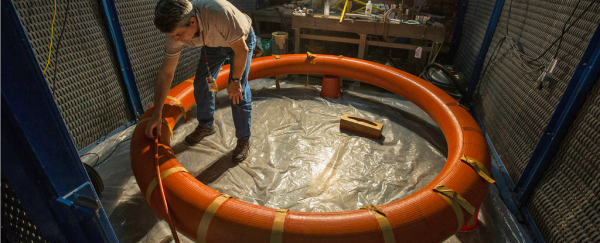NASA has developed a new decelerator that will be used in future space missions. It can work in extreme conditions and withstand packing and compression, resulting in a smaller footprint.
Historically, NASA has used decelerators to slow down space vessels as they prepare to land on Earth. Housed within the vessels, these decelerators generate drag and limit acceleration, working like a parachute.
NASA wants to ensure that decelerators used in future space missions will work in extreme conditions and withstand packing and compression. In order to achieve this, the agency created a scaled-down version of its latest Hypersonic Inflatable Aerodynamic Decelerator, or HIAD, design to ensure that it will be able to tolerate the packing process.
Using a vacuum pump, NASA engineers were able to squeeze the 3-metre, donut-shaped inflatable into a vastly smaller space, an important quality considering the space premium in vessels. They then packed and unpacked it multiple times, checking for tears in its Zylon and Teflon materials at every step in the process.
 NASA
NASA
Engineers at NASA foresee the viability of this technology in delivery of heavy cargo, science instruments, and people to other worlds. It could even be used to recover cargo from the International Space Station and return it to Earth.
According to Langley test engineer, Sean Hancock, HIAD was packed the same way each time to see how the material would handle folding, packing, and compressing. In doing so engineers develop a better understanding of how it would perform after exposure to handling, storage, and deployment during a space flight mission.
This development is also of great concern to NASA, as it anticipates future missions, especially manned ones, will require heavier vessels and ships. While a parachute has been used to bring down the Curiosity rover through the Martian atmosphere, a spacecraft containing astronauts and other materials could weigh 30 times more, necessitating better decelerators.
The HIAD would allow a slower descent of any vehicle through the atmosphere during future missions. In addition, the technology will protect the craft from the intense heat on the journey down. HIAD lead engineer, Keith Johnson, explained that the small test donut contained all the components for the latest design.
This test should allow NASA to develop a bigger prototype and bring us one step closer to settling the Red Planet.
This article was originally published by Futurism. Read the original article.
